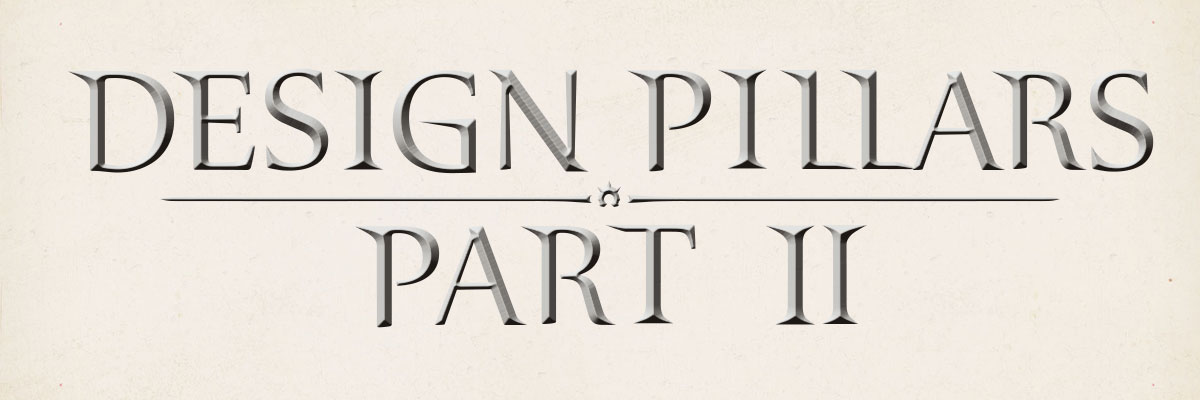In game dev it’s easy to say, “we want to make our game fun.” However to do that, we really ought to address the real question: what makes a game fun?
Well, here’s one way to look at it. In his seminal book Theory of Fun for Game Design, Raph Koster argued that:
“Fun is all about our brains feeling good – the release of endorphins into our system… One of the subtlest releases of chemicals is at the moment of triumph when we learn something or master a task”.
In other words, learning is fun.
To put it in a less nerdy context, let’s think about the games we’ve played growing up. It’s probably safe to say that we all played Tic-Tac-Toe as children but quickly outgrew the game once we’ve figured out the dominant strategy. The thing is, as soon we’ve discovered the “trick” to winning a game consistently we tend to stop playing because the pleasure found in winning has been greatly diminished.

When you take into consideration a game like Chess or Go and compare it to Tic-Tac-Toe, the difference in depth is obvious – and people can play these games over and over again throughout their entire lives. However, most people will only play Chess or Go continuously when there are enough players at their relative skill levels to play with. These games become increasingly less fun for both parties as the skill gap increases, and for the obvious reasons: The better player will invariably be bored by the absence of a challenge, and the less versed player will be irate that the prospect of losing.
So what does that mean? When a game is too easy and the “jig is up,” we get bored. When a game is too hard and we can’t win, it’s just frustrating. The concept of “fun,” we can then argue, is found in the challenges we face at the very margins of our ability.
This roughly translates into balancing the line between Depth and Accessibility as our second design pillar for our game.

For game designers, there are many ways to achieve this. Some games, like Tetris, adds more challenge by speeding up the game as you progress. This forces you to think and execute faster as your skill advances in the game. Other games could increase the complexity of the mechanics involved or add larger numbers of opponents or obstacles for the player to face. Now before we meander too much, let’s go back to our game: Forged of Blood.
If we accept the above premise as the definition of “fun,” then the lesson to draw on would be to have sufficient depth so that the player can always be challenged by something new, either through new mechanics or through different layered gameplay that unlocks as the player progresses.
For example, our game will have two main gameplay modes: the Tactical Layer and the Strategic Layer, in addition to our CYOA-like narrative element. Our plan is to familiarize the player with the complexities and challenges present in the Tactical Layer during Act I. Then we will open up additional responsibilities and challenges for the player in Act II with our Strategic Layer, thereby compounding upon the experience of the player as their skill progresses in the game.
Another approach we are taking is the idea of a “Layered Challenge” in which we allow different players to take on the challenges they want and reward them appropriately. This is a fairly popular approach in a lot of games and can be showcased in different ways. For example, missions in a game can be given a 1-3 star rating and while the mission can be completed in various ways for a 1 star rating, a 3 star rating would carry with it a few challenging caveats. Now, the average gamer might be content with a 1 Star rating that would allow them to progress to the next mission, while more hardcore players might go for the 3 Star rating for a completionist run.
In the context of Forged of Blood, we are thinking of something very similar with primary and secondary objectives. While we will probably forego the “rating” system, we would like to reward players for approaching the game tactically and completing the side objectives. For example: in a mission where the primary objective is to escape an ambush, the player could easily complete the mission by reaching the escape point with only one unit left alive. However, for the tactically sound and challenge oriented, secondary objectives like keeping all of their units alive or preventing the enemy from escaping and warning others would be available. Completing the theoretically more challenging objectives will earn hardcore players rewards, with anything from loot and resources to having multiple effects on the story of strategic layers.
The idea is to have enough depth that a strategically minded and tactically savvy player will have enough meat to digest, but at the same time, be approachable to newer players. That said, we will have an extensive tutorial and sensible default templates for those who don’t want to mess with the finer details in addition to the various layers of complexity we will have for the more hardcore players among us.
Anyway, that’s it for now, I will let our lead game designer to discuss more about the specific of our game system, but this should give you a good sense of the direction we are going to.
Thanks,
-Joe


Leave A Comment